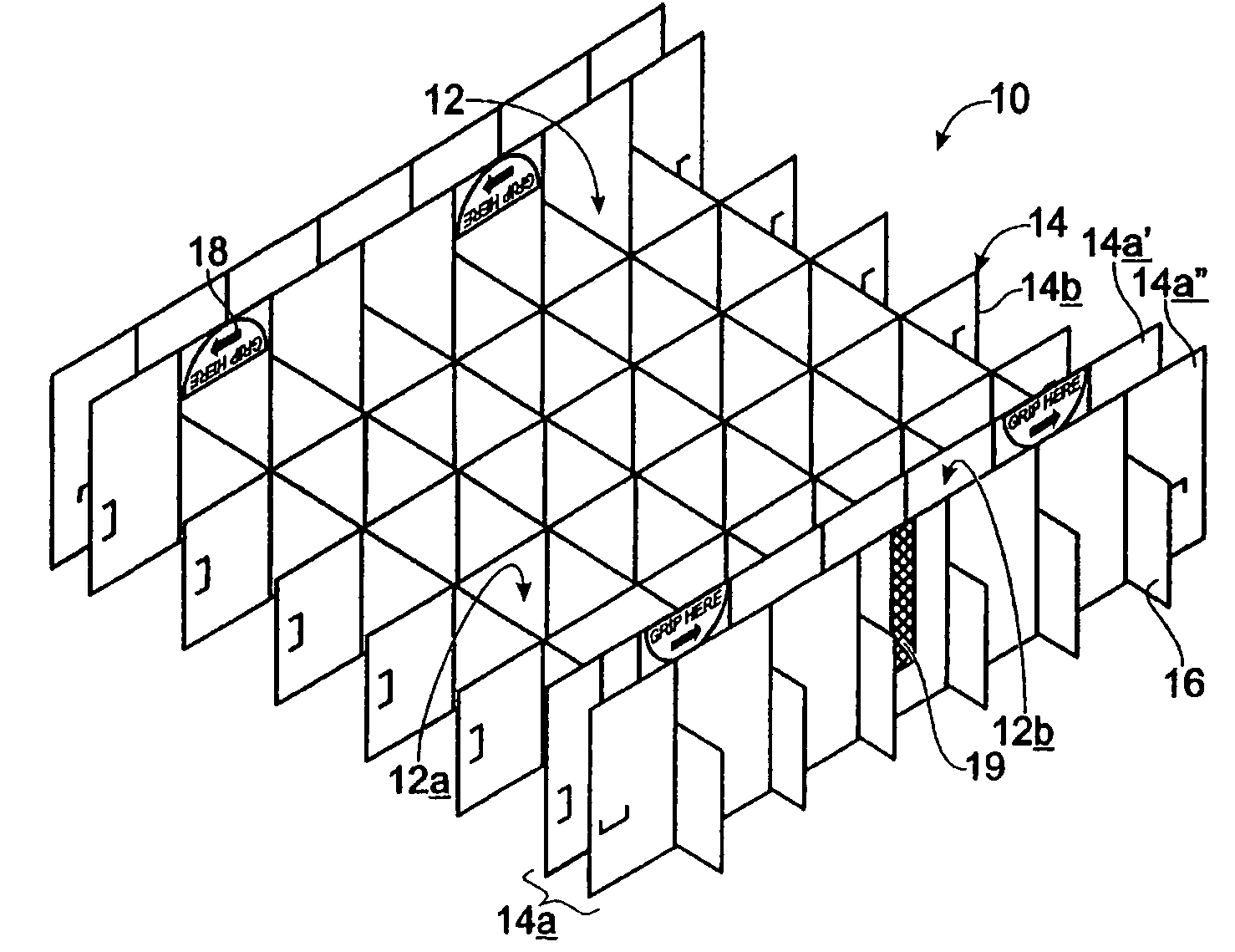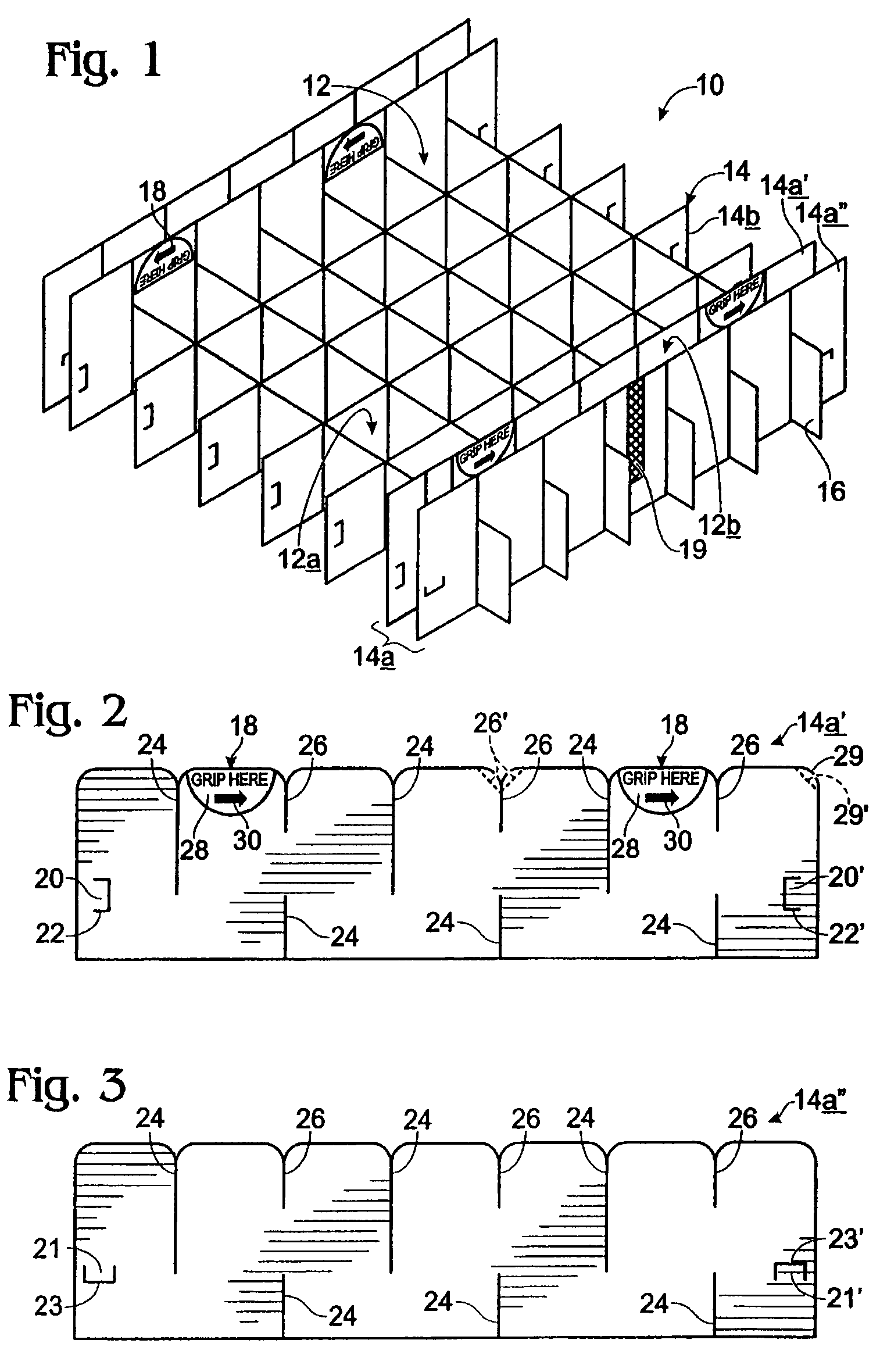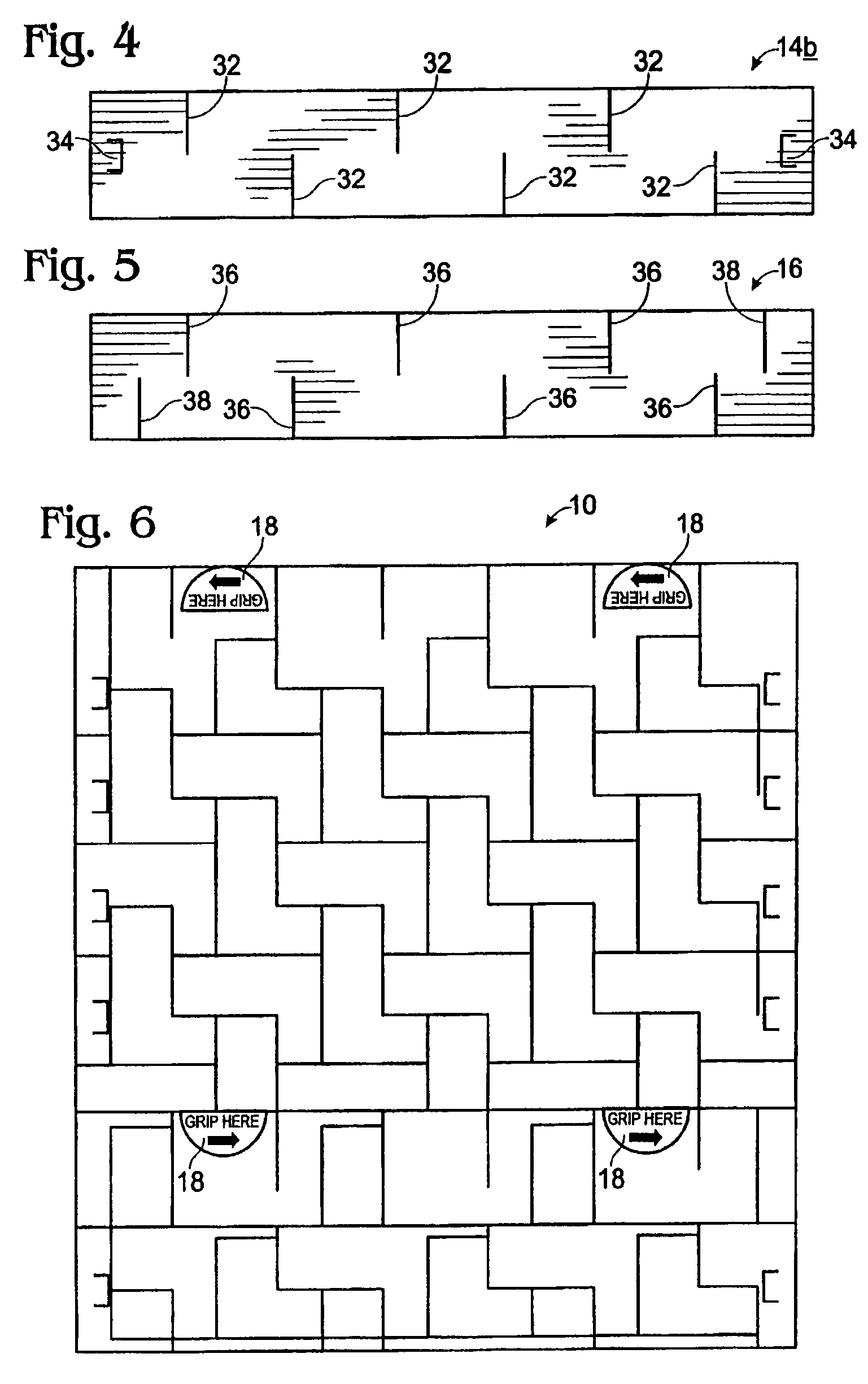Fluent material confinement system
a material confinement and fluid technology, applied in the direction of umbrellas, buttress dams, paper/cardboard articles, etc., can solve the problems of difficult to determine whether complementary slot connectors are securely connected, difficult to stack a plurality of grids to form a wall, and difficult to determine the corr
- Summary
- Abstract
- Description
- Claims
- Application Information
AI Technical Summary
Benefits of technology
Problems solved by technology
Method used
Image
Examples
first embodiment
[0042]FIG. 1 shows, generally at 10, a fluent material confinement system. Fluent material confinement system 10 is formed from a plurality of elongate, generally strip-shaped members coupled together in such a manner as to define an array of open-ended cells 12. The plurality of strip-shaped members includes a plurality of lengthwise strips 14, and a plurality of widthwise strips 16. Lengthwise strips 14 may include strips of a first, greater width 14a, and strips of a second, lesser width 14b. Lengthwise strips 14 may also include strips with different types of connectors, as described in more detail below. The depicted arrangement of lengthwise strips 14 and widthwise strips 16 defines at least two different types of cells, interior cells 12a and exterior border cells 12b. Furthermore, the depicted arrangement of strips allows fluent material confinement system 10 to be movable between an open configuration (shown in FIG. 1) and at least one collapsed configuration (described in ...
second embodiment
[0087]FIG. 11 shows, generally at 100, a fluent material confinement system, with different connecting structures than fluent material confinement system 10. Fluent material confinement system 100 has many of the same features as fluent material confinement system 10. For example, fluent material confinement system 100 includes a plurality of interior cells 102a bordered by a plurality of border cells 102b formed from an interconnected network of lengthwise strips 104 and widthwise strips 106. Lengthwise strips 104 may include both wider lengthwise strips 104a and narrower lengthwise strips 104b. Furthermore, fluent material confinement system 100 may include a plurality of deployment indicators 108 configured to assist the deployment of the fluent material confinement system in low visibility conditions. The depicted fluent material confinement system 100 includes two wider lengthwise strips 104a, each positioned in a second-to-outermost position. However, either more or fewer wide...
PUM
 Login to View More
Login to View More Abstract
Description
Claims
Application Information
 Login to View More
Login to View More - R&D
- Intellectual Property
- Life Sciences
- Materials
- Tech Scout
- Unparalleled Data Quality
- Higher Quality Content
- 60% Fewer Hallucinations
Browse by: Latest US Patents, China's latest patents, Technical Efficacy Thesaurus, Application Domain, Technology Topic, Popular Technical Reports.
© 2025 PatSnap. All rights reserved.Legal|Privacy policy|Modern Slavery Act Transparency Statement|Sitemap|About US| Contact US: help@patsnap.com



